Via Dolorosa. As I speak it aloud, it sounds so beautiful. Yet, as lovely as it sounds, the irony is in its translation, “The Way of Sorrows”.
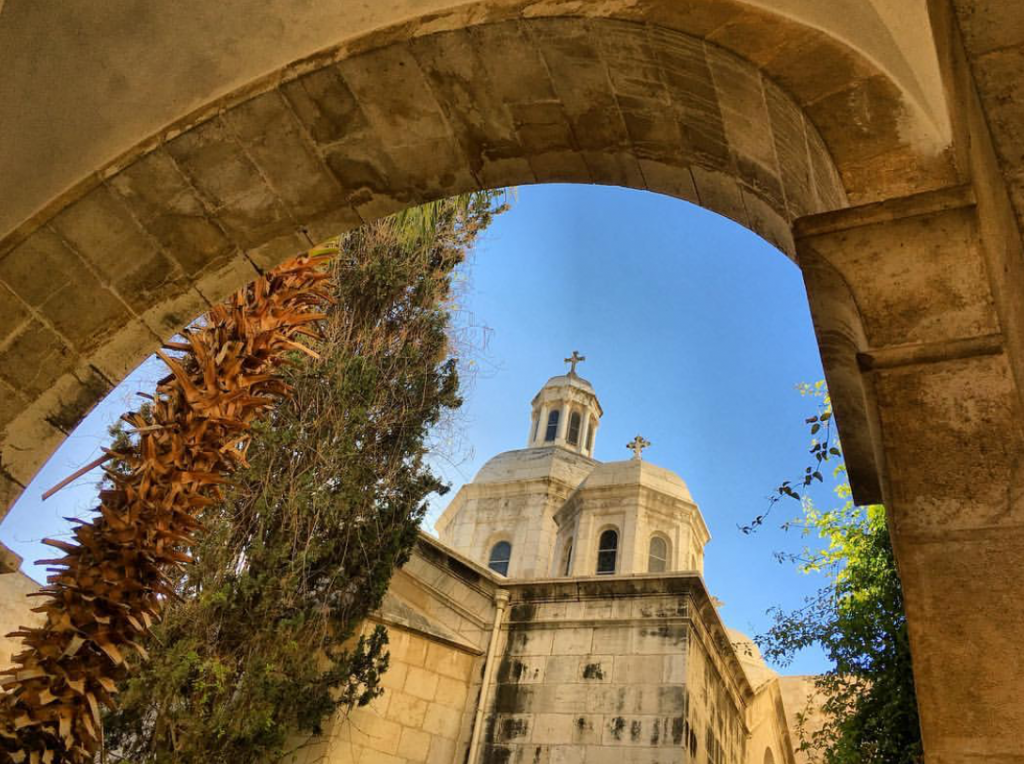
Winding its way through the narrow roads of the Old City of Jerusalem, the Via Dolorosa represents the route of Jesus’ final steps as He made His way to the crucifixion site of Golgotha. Fourteen Stations of the Cross are identified on this pilgrimage as important events that took place as Jesus carried His cross to His death.
This venerated path begins shortly within the Lion’s Gate at Pilate’s Judgment Hall (modern day Ecce Homo Convent) where Jesus was condemned to death. Crossing through the Muslim Quarter from east to west the Via arrives at the Church of the Holy Sepulchre, known as Calvary Hill. While there is no historical basis for the exact route, the tradition is so strong that thousands of visitors make this journey each year in memory of Jesus’ suffering.
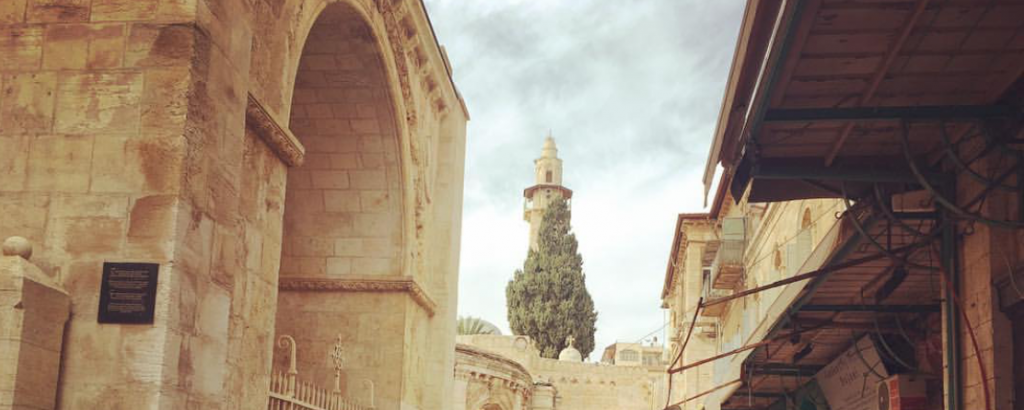
Our first stop is north of the Temple Mount at Omariye School, identified as Station One. On Friday, at 3 in the afternoon, crowds gather within the square at the Madrasa el Omariye. Joining the Franciscan friars who follow the Way of the Cross, a minaret now stands in place of the Antonia Fortress (the Praetorium) where Jesus was condemned to die. [John 18:28]
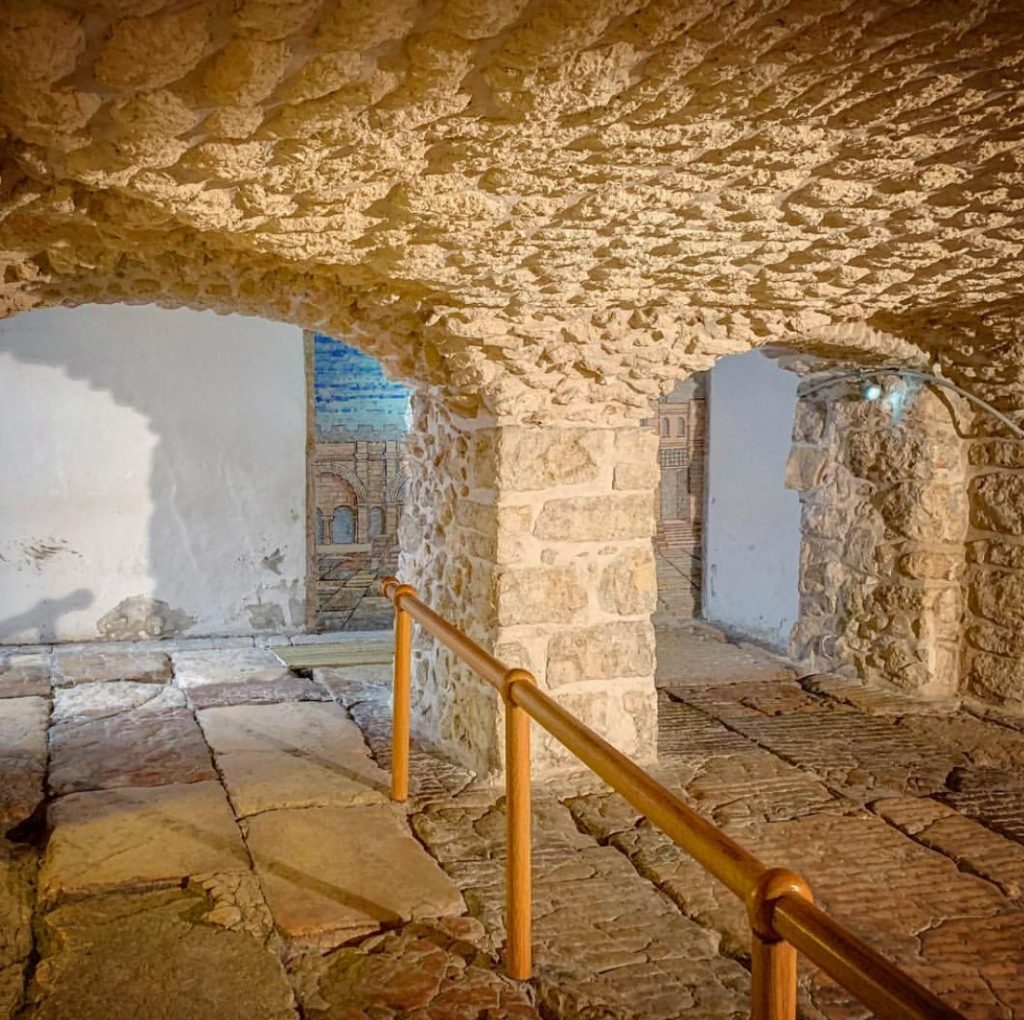
Station Two is located within the lower levels of the Chapels of the Condemnation and Flagellation. Considered a part of the Antonia Fortress, Jesus was not only sentenced to death by Pilate at this location but was also beaten. “Pilate took Jesus and scourged Him.” John 19:1
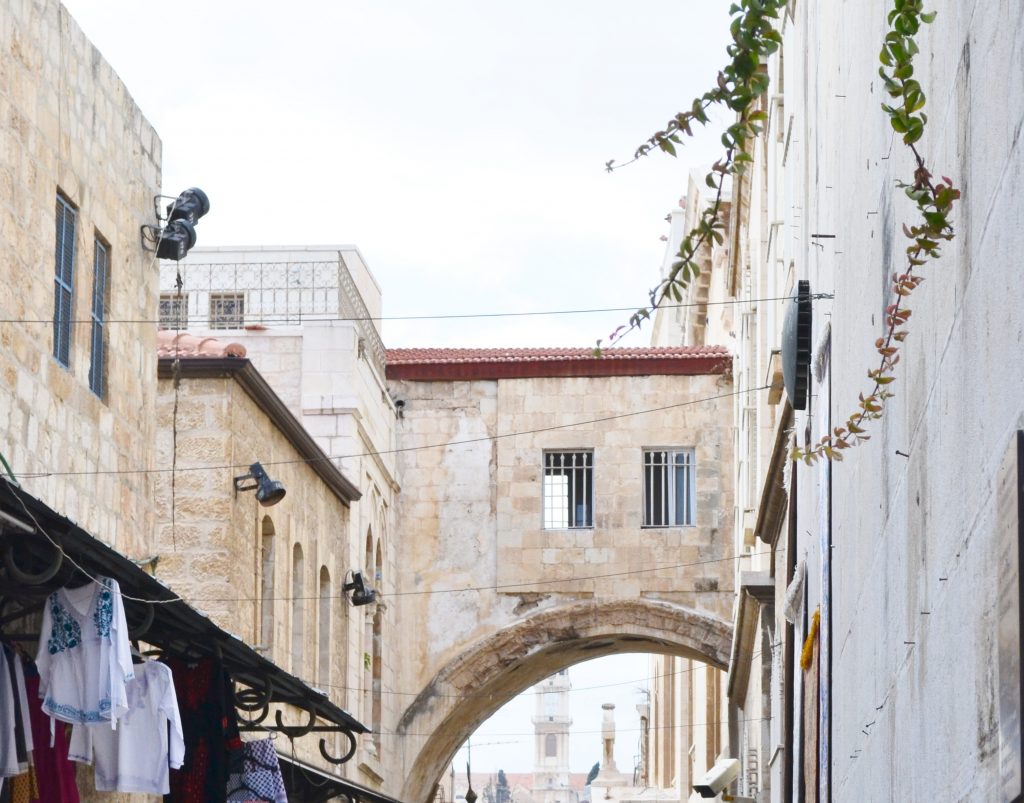
Adjacent to the Muslim Omariye School for boys is the 19th century Church of the Sisters of Zion convent. Ancient remains associated with the Antonia Fortress include the struthion pools, the Lithostrotos pavement (which covers the pool) and the triple arch of Ecce Homo, a part of which spans the Via Dolorosa.
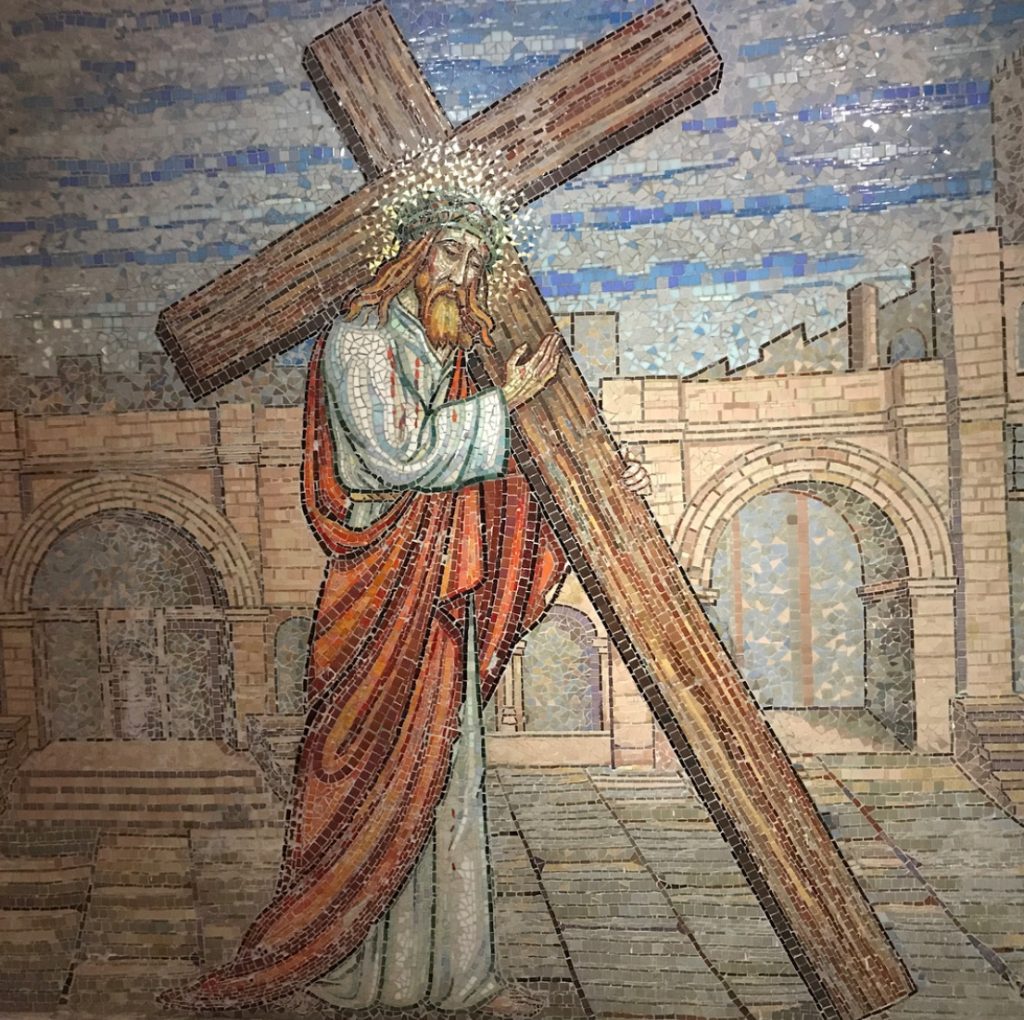
John 19:5 “So Jesus came out wearing the crown of thorns and the purple robe. Pilate said to them, ‘Behold the man (Ecce Homo)’.”
John 19:13 “When Pilate heard these words, he brought Jesus outside and sat on the judge’s bench at a place called the Stone Pavement (Lithostrotos).”
Additional Biblical references to these events are documented in Matthew 27:27 – 30 and Mark 15:16 – 19.
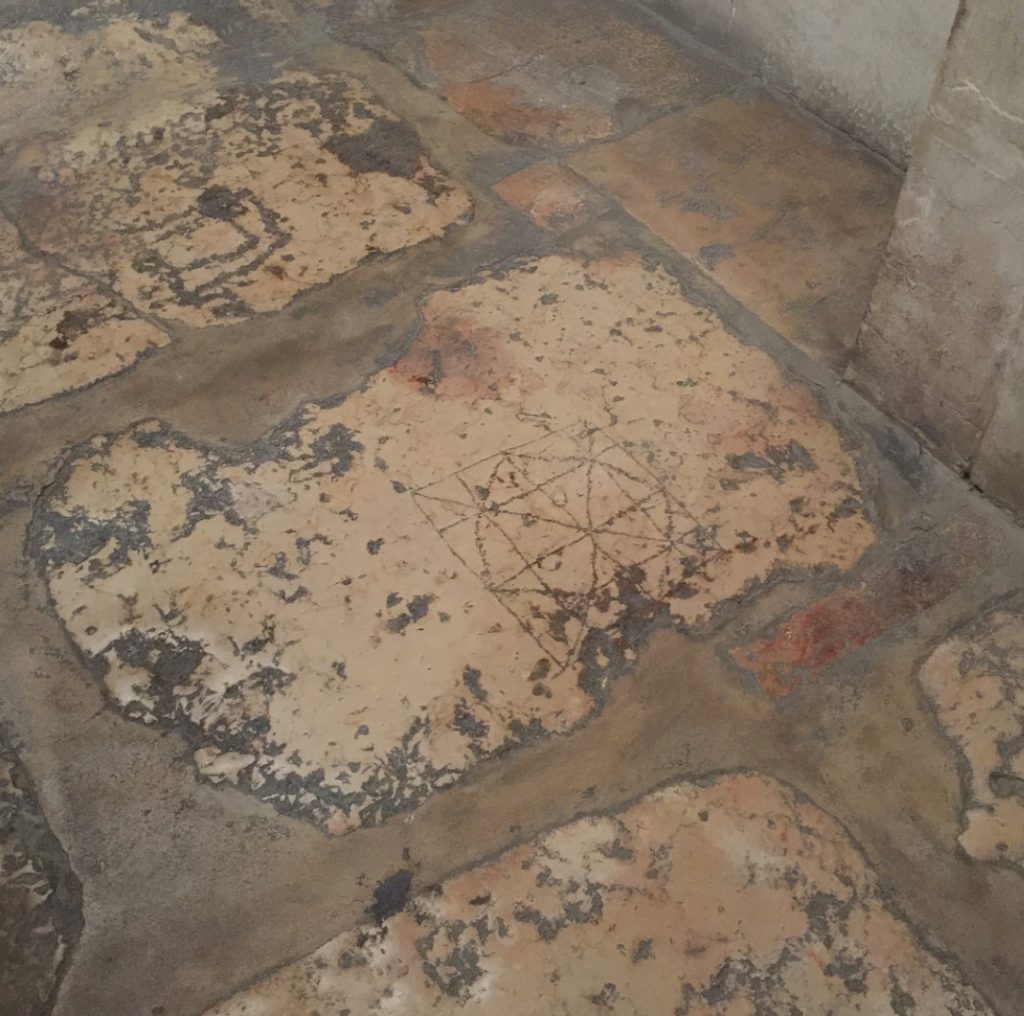
Although there is a large pavement under the convent, it was determined that the Lithostrotos dated back to the 2nd Century AD and would have been the floor of the Roman Forum. However, because further excavations have not been completed, the area may have indeed been the Lithostrotos as described in the biblical account. If this is the case, this would have been the start of the Passion of Christ where He was first condemned, crowned with thorns and began His walk towards the Place of the Skull.
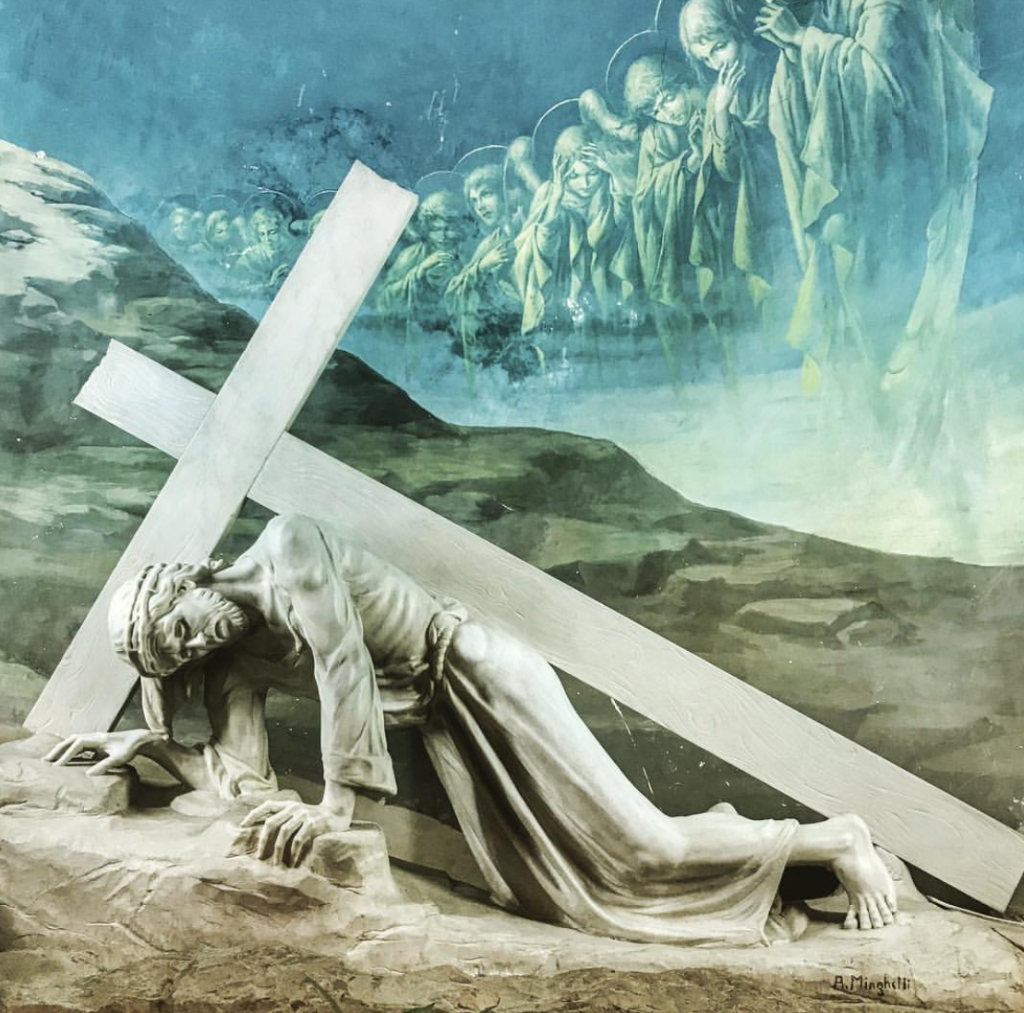
The Third Station of the Cross, at the corner of El-Wad Road is identified by a small Polish chapel which displays a beautiful marble relief above its door. While there are no Scriptures that corroborate the event, this location commemorates Jesus’ falling under the weight of the cross for the first time.
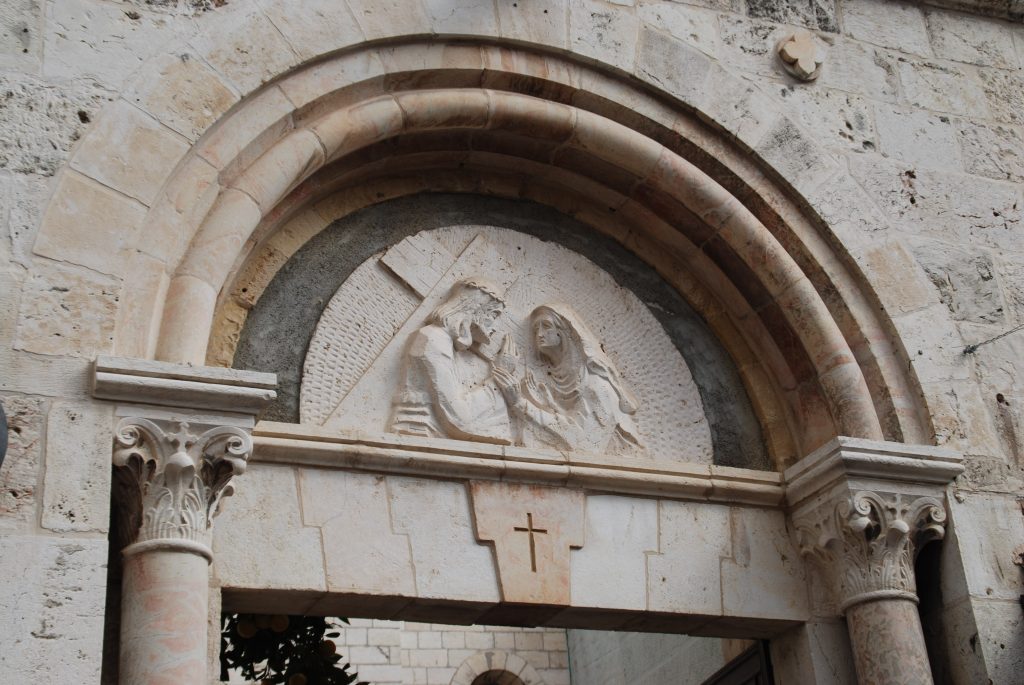
Tradition states that Jesus had an encounter with His mother Mary as He traveled towards Golgotha to be crucified. There are no scriptures that mention this meeting between Jesus and Mary, yet a sculpture relief at the Armenian Church of Our Lady of the Spasm, represents this event as Station Four.
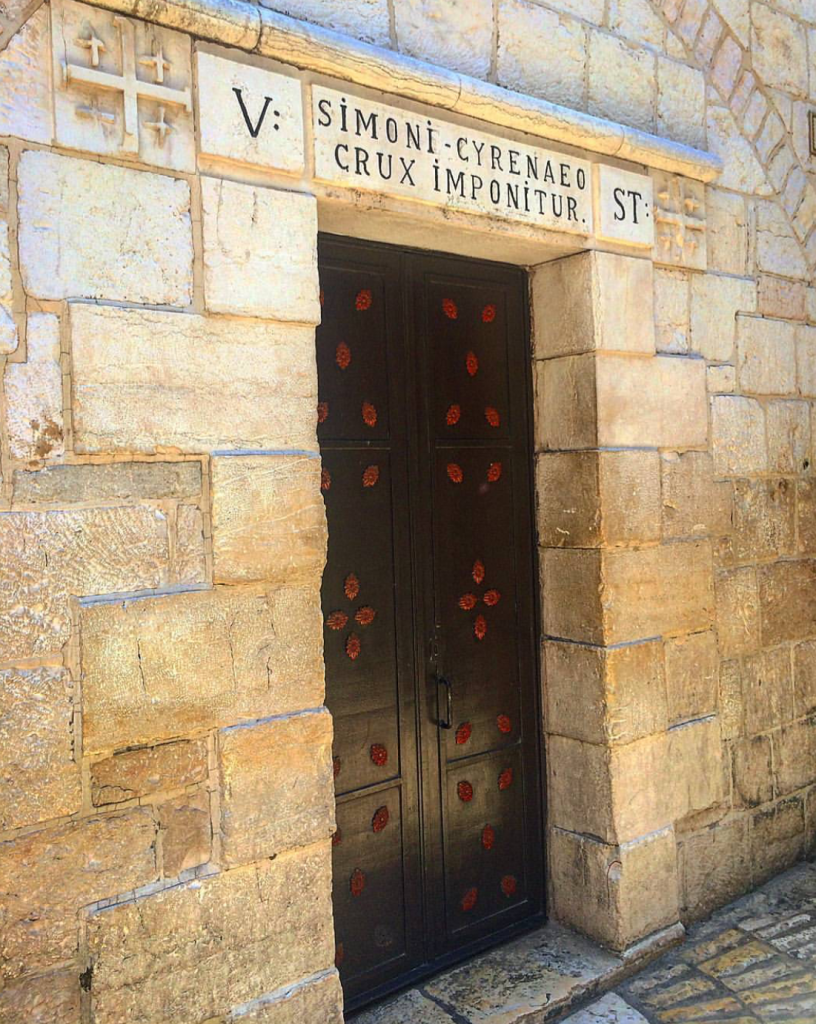
Mark 15:21 states, “And they compelled a passerby, Simon of Cyrene, who was coming in from the country, the father of Alexander and Rufus, to carry His cross.” A Franciscan oratory, adjacent to the Chapel of Simon of Cyrene, marks this location along the Via Dolorosa, the start of Jesus’ ascent towards the hill of Calvary. This is Station Five.
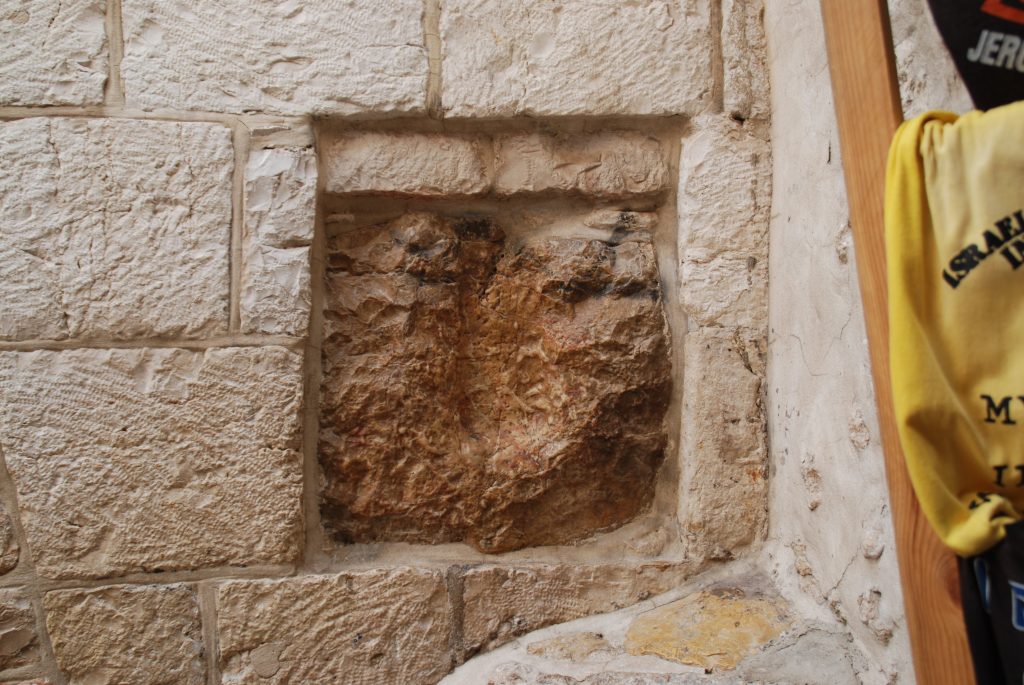
What I found most interesting near Station Five was an imprint in the wall where it was said Jesus put his hand leaving an indention in the rock. Visitors over the centuries have placed their hand here in remembrance of Jesus’ walk along the Via Dolorosa and the custom continues even to this day. 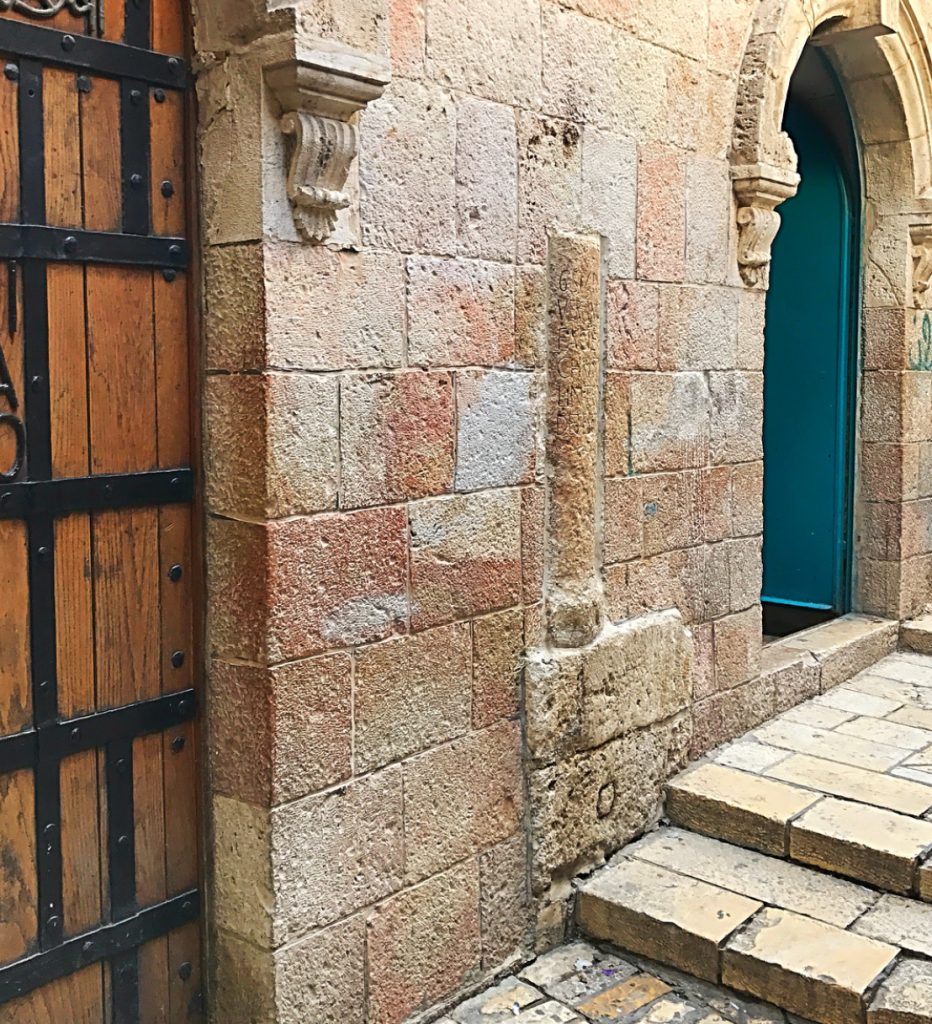
Since medieval times, the Roman Catholic church has recognized the chance meeting between Jesus and Veronica, a young girl that Jesus had healed in the past. While the blood and sweat was dripping down Jesus’ face, it was difficult for Him to see so she used her handkerchief to wipe his face. Later, she noticed that His face was imprinted on the cloth. Inside, a beautifully restored candelabra is said to have belonged to Veronica as well. While this event is not mentioned in the Bible, it is recognized at the Church of the Holy Face and Saint Veronica as Station Six along the Via Dolorosa.
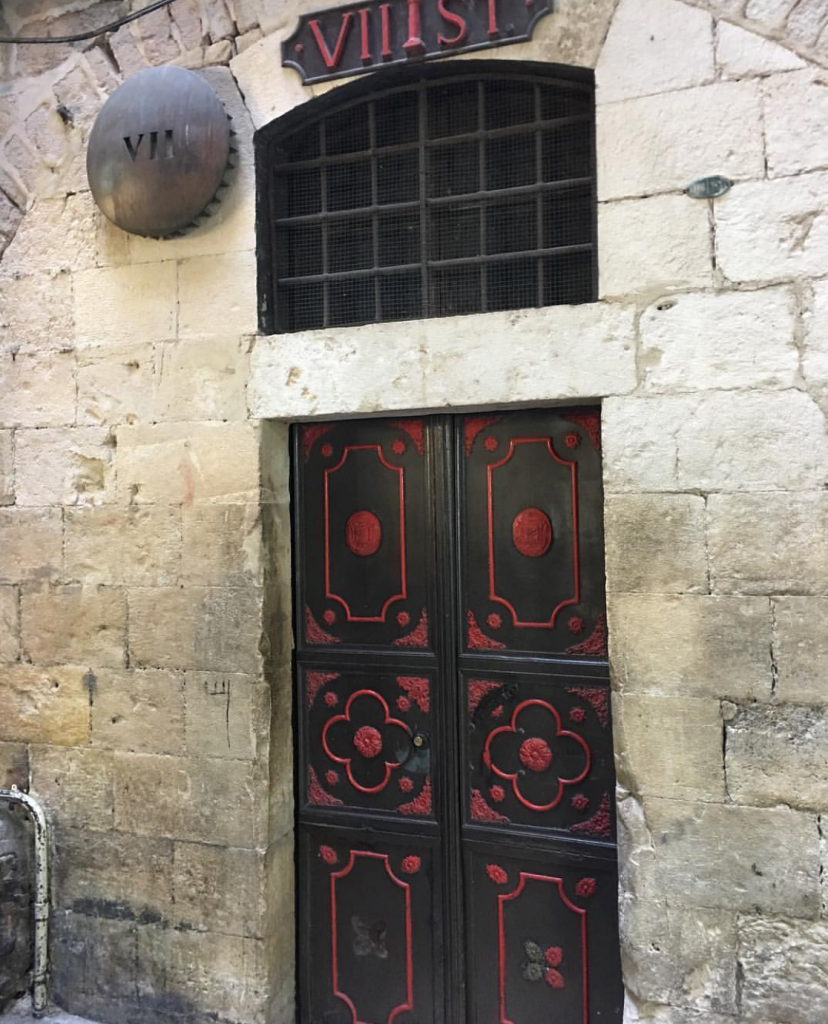
Station Seven: Located at the crossroads of the Cardo (the main street of Jerusalem during the Roman Empire), and Decumanus (main street running east and west), there was a Roman column that stood nearby the Judgment Gate. Tradition states that on this column, Jesus’ death warrant was posted here, just as the Via Dolorosa begins to exit the Old City of Jerusalem.
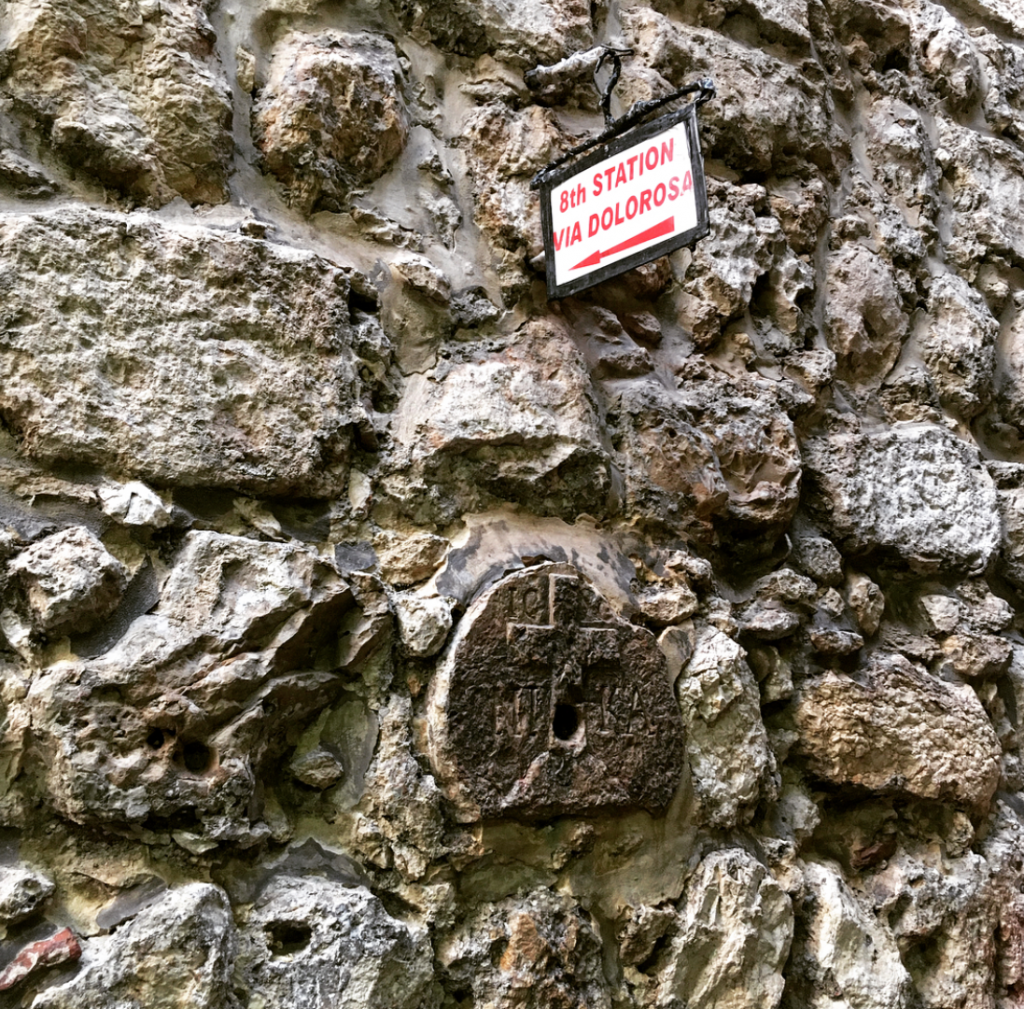
Jesus addresses the women of Jerusalem at Station Eight which is designated as a Latin Cross on the stone wall of the Greek Monastery. “Daughters of Jerusalem, weep not over Me. Weep rather over yourselves and your children.” Luke 23:28
Looking closely at the inscriptions on the stone, one can see the letters IC and XC, representing the first and last letters of the Greek words meaning “Jesus Christ”. Below this representation are the letters NIKA, which translates in the Greek as “victory”, which provides the slogan “Jesus Christ conquers!”
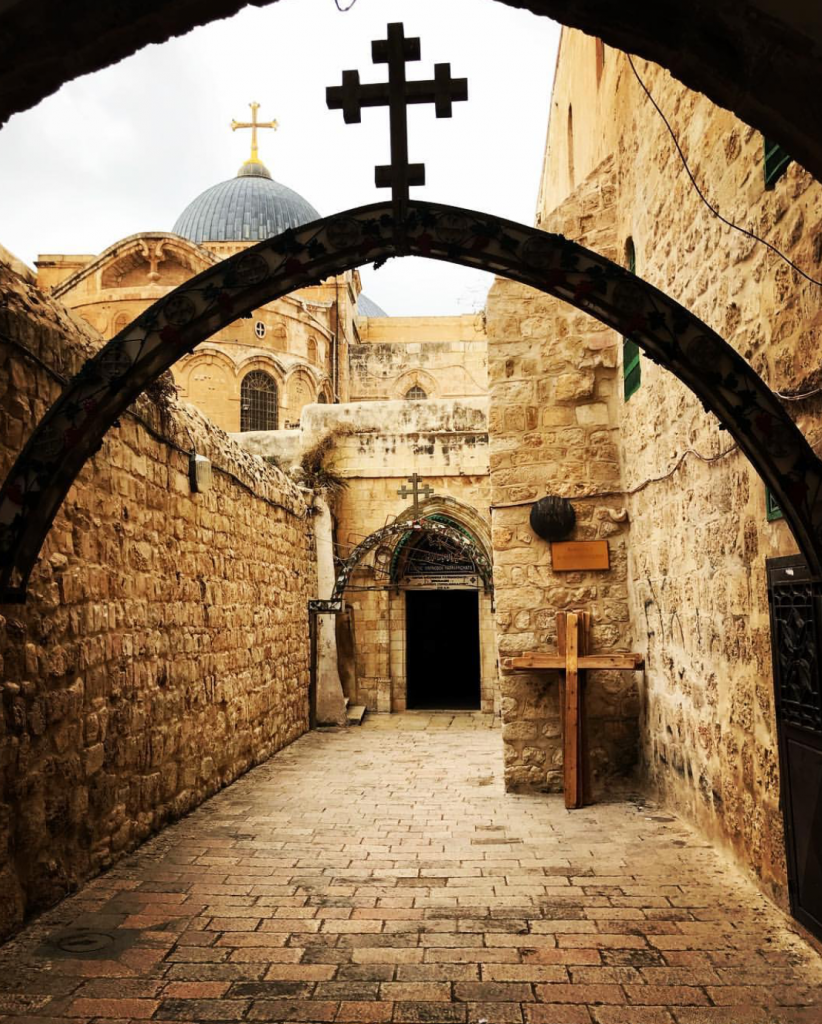
The Ninth Station of the Cross is not actually along the Via Dolorosa but at the entrance of the Monastery of St. Anthony. To the right is a Roman column marking this station while the dome in the distance is the Church of the Holy Sepulchre, where the remaining Stations of the Cross (10 – 14) are identified.
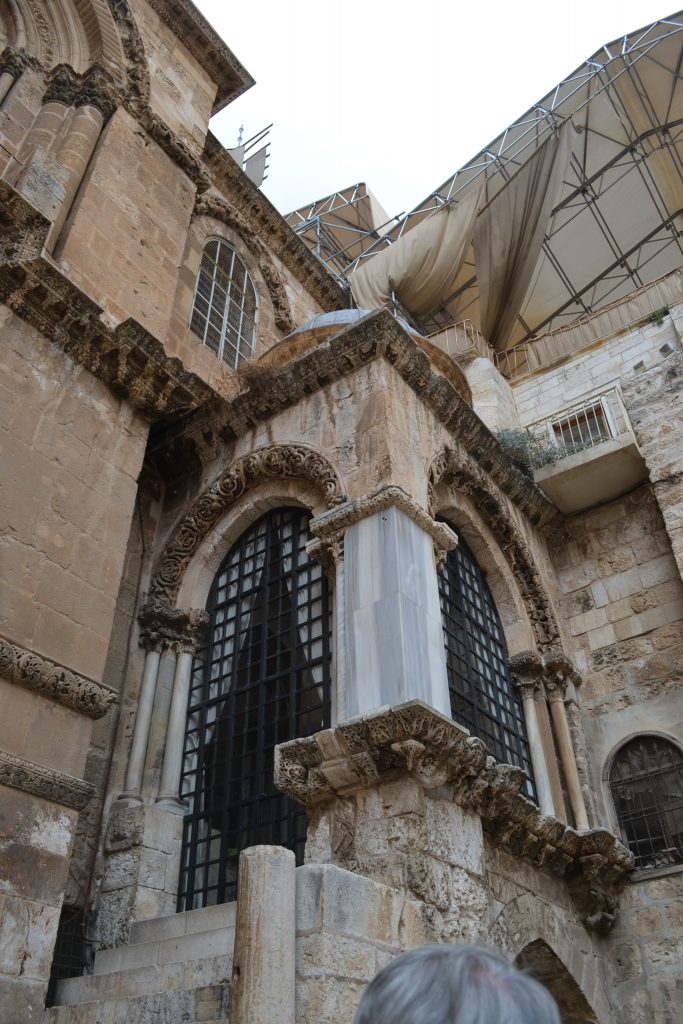
Station Ten is the location where Jesus was stripped of His clothing as documented in Matthew 27:28 – 30:
28 They stripped off Jesus’ clothes and put a scarlet robe[a] on him. 29 They made a crown out of thorn branches and placed it on his head, and they put a stick in his right hand. The soldiers knelt down and pretended to worship him. They made fun of him and shouted, “Hey, you king of the Jews!” 30 Then they spit on him. They took the stick from him and beat him on the head with it.
The Chapel of the Stripping of Jesus’ Garments is located up the stairs which can be reached from the courtyard of the Church of the Holy Sepulchre.
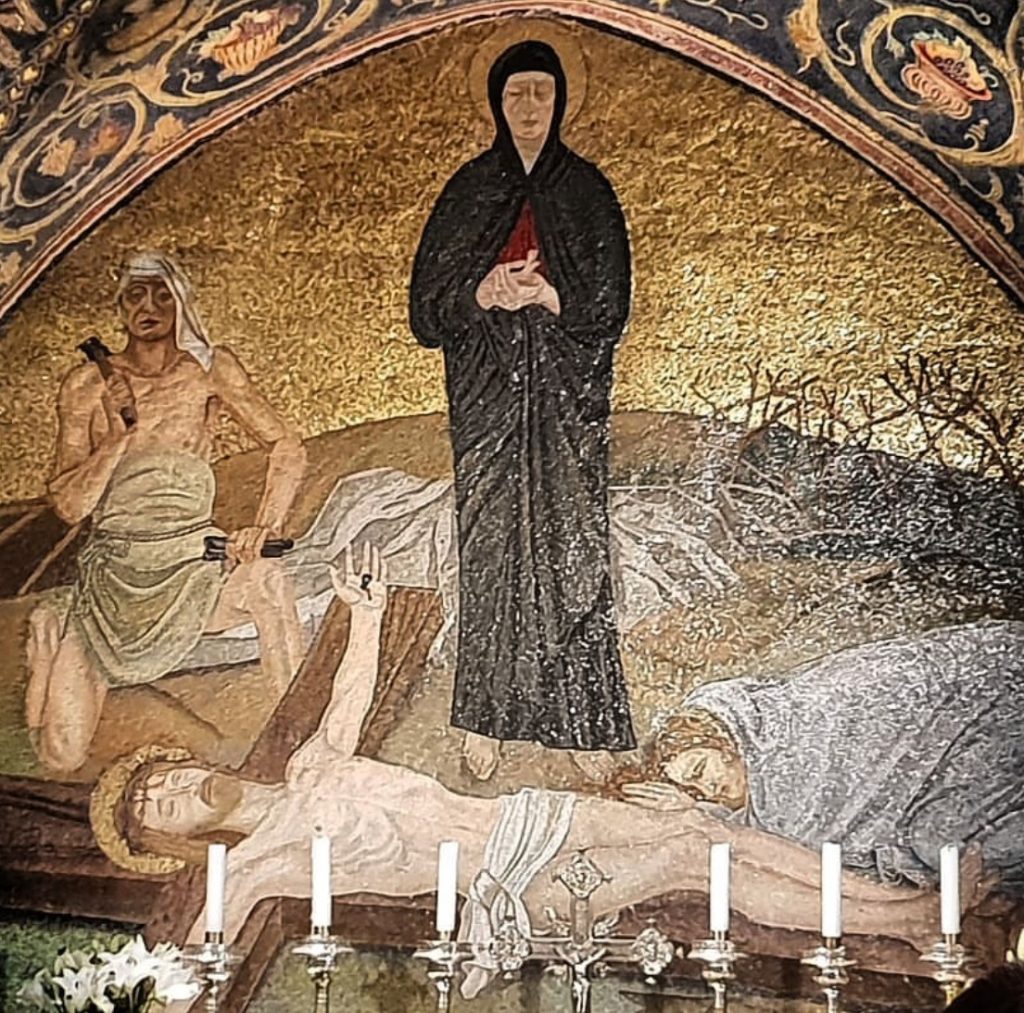
A Franciscan chapel within the Church of the Holy Sepulchre is the supposed location where Jesus was nailed to the cross. A mosaic over the altar shows Mary, Jesus’ mother, standing over him as a Roman soldier hammers the nail into Jesus’ wrist marking the Eleventh Station of the Cross.
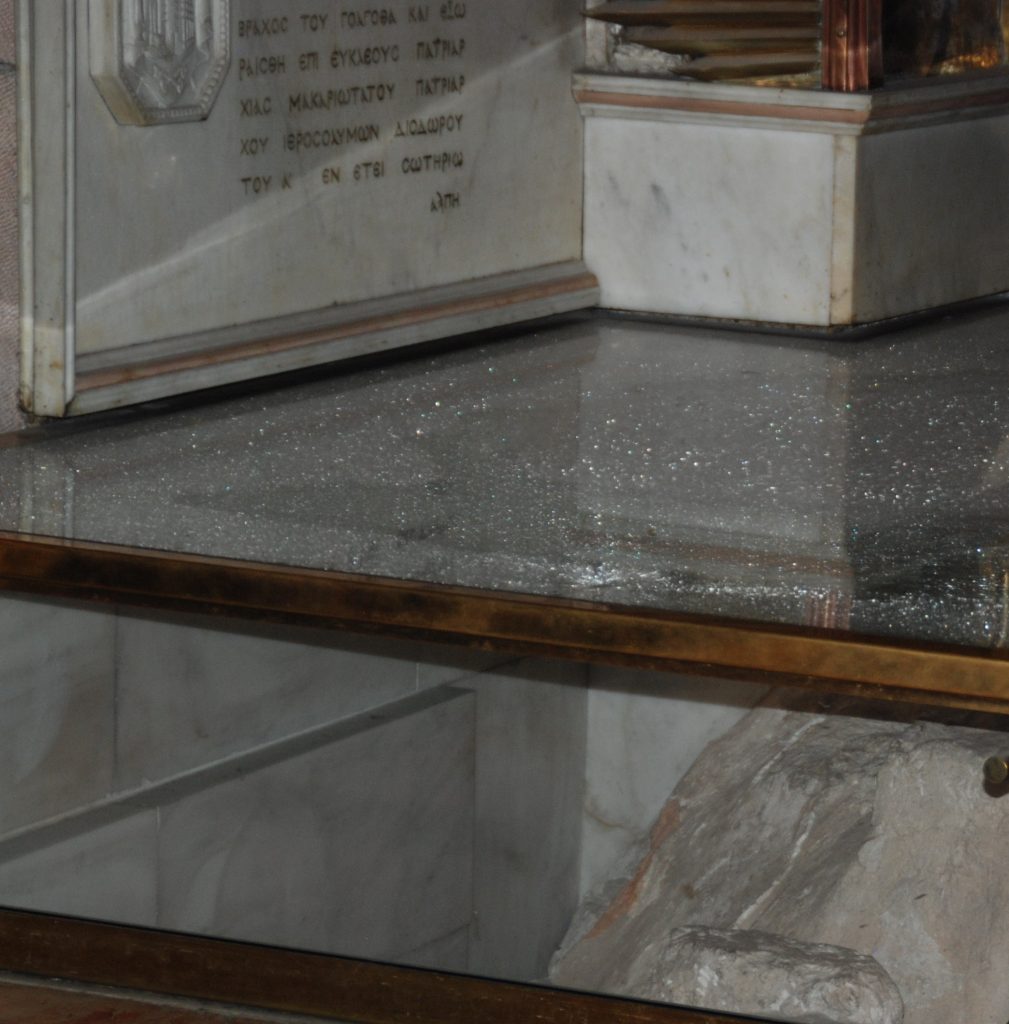
Station Twelve is one of the most popular stations where a Greek altar has been placed over the proposed site where Jesus’ cross was positioned on the Rock of Calvary. Visitors wait in line to touch the rock where the cross was affixed.
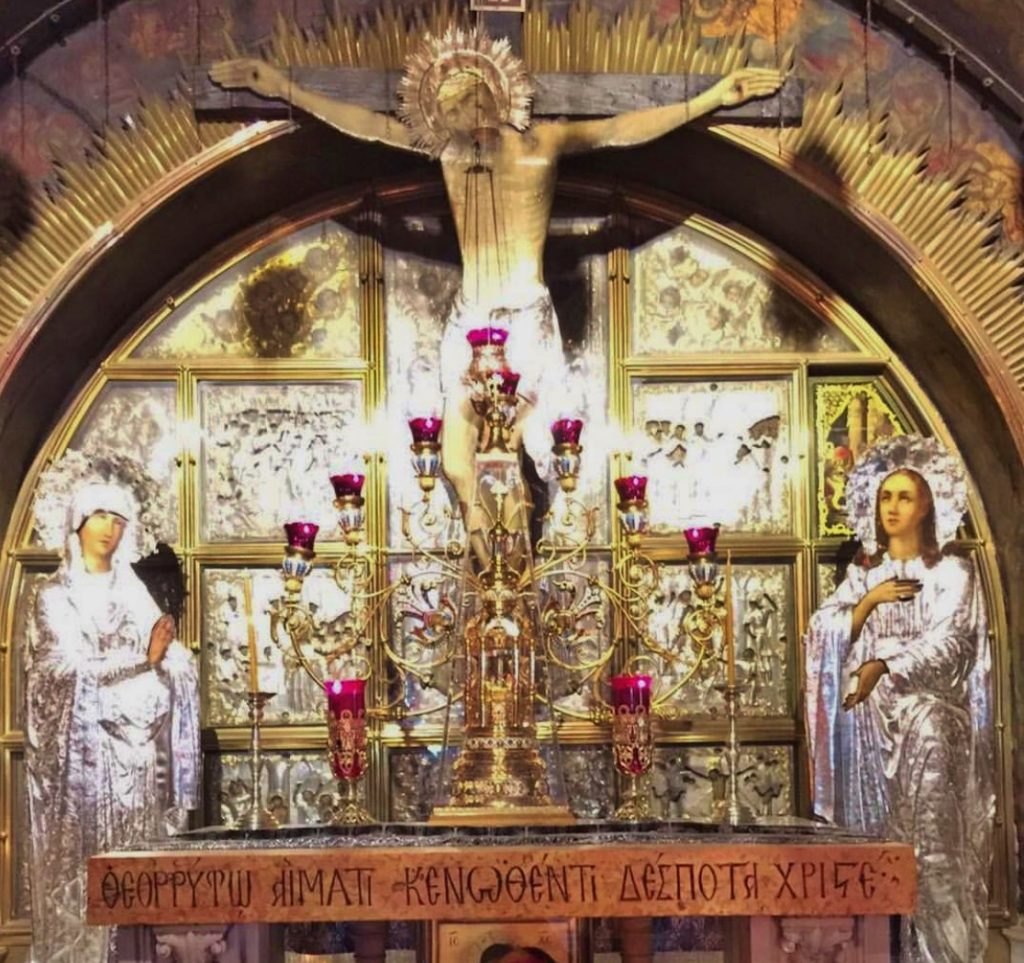
Behind the altar is the image of Jesus hanging on the cross as John His apostle and Mary, His mother look on. The altar and statues represent the Thirteenth Station of the Cross where Jesus was taken down from the cross and was placed in the arms of Mary.
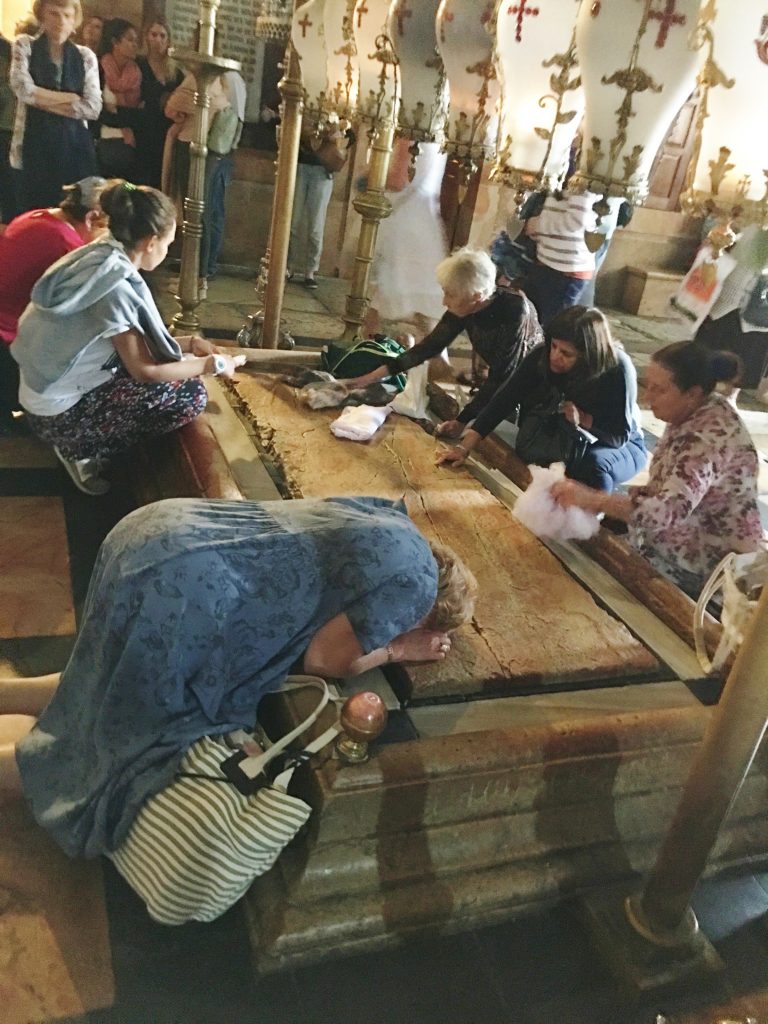
“Joseph of Arimathea, a member of the council, and a disciple of Jesus, went to Pilate and asked for the body of Jesus. Then he took the body of Jesus down.” Luke 25:53.
When Jesus’ body was taken down from the cross, He was brought to the foot of the Rock of Golgotha to prepare it for Jewish burial, wrapped in linens and anointed with oils and spices. The site here is known as the Stone of the Unction.
Christian pilgrims kneel at the marble slab, which is also known as the “Stone of the Anointing”, to touch the stone and pray, while others wipe the stone with a cloth in remembrance of Jesus’ burial preparation. “Then they took the body of Jesus, and bound it in linen cloths with the spices, as is the burial custom of the Jews.” John 19:40
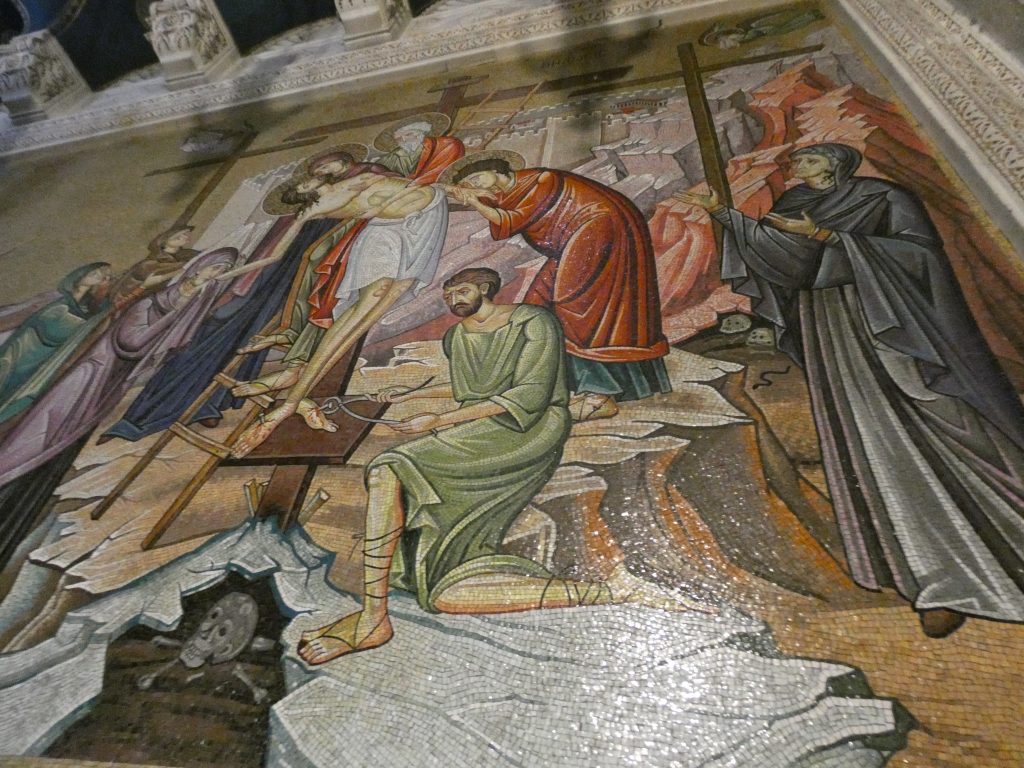
On either side of the altar is the Rock of Golgotha. On the right side, one can see a large crack in the rock which refers to the Scripture that documents, “The earth shook and the rocks split” as Jesus gave up His spirit. Matthew 27:51
Many believe that Adam, the First Man, was buried at the Rock of Golgotha and when the rock split at the time of Jesus’ death, His blood ran through the crack touching Adam’s skull, bringing salvation to Adam, the first sinner.
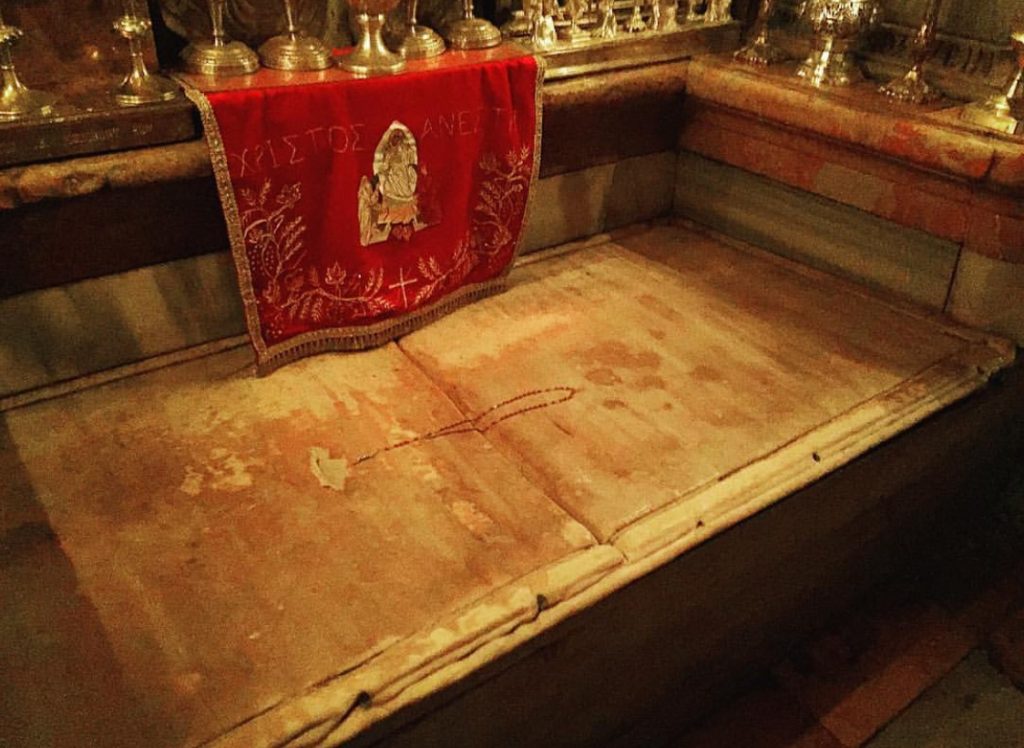
The Fourteenth Station of the Cross is the final memorial along the Via Dolorosa, the place of Jesus’ burial and resurrection.
“And when Joseph had taken the body, he wrapped it in a clean, linen cloth and laid it on his own new tomb which he had hewn out in the rock. Then he rolled a stone before the entrance of the tomb.” Matthew 27:59
The Holy Sepulchre, erected during the rule of Emperor Constantine in the 4th century AD, is the most sacred site of Christianity. The site is surrounded by several loculus (rock cut) tombs which date back to the 1st century BC and 1st century AD. The large outer dome protects the aedicule (small shrine) which is made of two chambers to include the Chapel of the Angel and the Chapel of the Holy Sepulchre.
The Chapel of the Angel is the proposed site where an Angel removed the stone away from Jesus’ tomb. The stone is enshrined in a glass case. It was also here where the Angel appeared to Mary Magdalene and Mary the mother of Jesus. He delivered the spectacular news that Jesus had been resurrected and instructed the women to tell Jesus’ disciples of this news. The Chapel of the Holy Sepulchre was built within the second chamber where Jesus was laid to rest. Today the tomb is empty because of Jesus’ Resurrection, the Great News of Christianity and hope to all who believe.
What better way to meditate on the death of Jesus than to explore the Via Dolorosa, The Way of Sorrow? Have you taken this pilgrimage route? I would love to hear about your experience if you would kindly leave your message in the comments section below. Many thanks for reading about my travel experience to Jerusalem and wishing you many Happy Travels!
What to See and What to Do:
The Church of the Holy Sepulchre
Suq Khan e-Zeit and Christian Quarter Road
Jerusalem, Israel
- Admission: There is no admission but donations are greatly appreciated.
- Hours: The Church is open from 8 AM to 8 PM from April to September and from 8 AM to 7 PM from October to March.
- Travel Tip: Arrive early to avoid the tour crowds and dress appropriately for entering a holy site.
Where to Stay:
The Olive Tree Hotel, Royal Plaza Jerusalem
23 St. George Street
Jerusalem, Israel
Telephone: 972 2 5410410
Where to Eat:
The Olive Tree Hotel, Royal Plaza Jerusalem
23 St. George Street
Jerusalem, Israel
Telephone: 972 2 5410410
The Olive Tree Hotel has an amazing buffet provided for dinner with a well-rounded offering of Israeli dishes and world-wide cuisine.
What to Eat:
- Kubbeh is similar to falafal in that it is served in a ball but made with meat and spices then deep fried.
- Manqusheh is similar to pizza made with flatbread topped with olive oil and spice (usually za’atar which is similar to thyme)
- Ka’ak is a large pretzel like pastry that is usually eaten at breakfast time. Crunchy on the outside and soft on the inside, they are readily available at bakeries and roadside stalls.
- Potato swirls are similar to french fries, cut and deep fried.
- Qatayef is a pancake-style dessert stuffed with cheese, nuts or sugar and spices and are popular during the Ramadan holiday
- Kunafeh is a pastry similar to baklava covered in syrup and cheese
What to Read:
- Khirbet Khizeh by S. Y. Yizhar
- The Hilltop, by Assaf Gavron
- Dancing Arabs by Sayed Kashua
- The People of Forever are Not Afraid, by Shani Boianjiu
- Five Seasons, by A.B. Yehoshua
- Twenty-One Stories by S. Y. Agnon
- Suddenly, A Knock on the Door by Etgar Keret
- Apples from the Desert, by Savyon Liebrecht
- From the Four Winds, by Haim Sabato
- To the End of the Land, by David Grossman
- A Tale of Love and Darkness, by Amos Oz
Photo Guide for Israel:
- The Western Wall for a religious experience
- Jaffa’s Old Town for its charm
- The Dead Sea for its interesting topography
- Caesarea Harbor and its Roman architecture and history are worth a visit
- Arbel National Park and Nature Reserve provides a phenomenal view of the Sea of Galilee
- The Church of the Holy Sepulchre in Old City Jerusalem is said to be the burial location of Jesus
- The view of the Temple Mount from the Mount of Olives